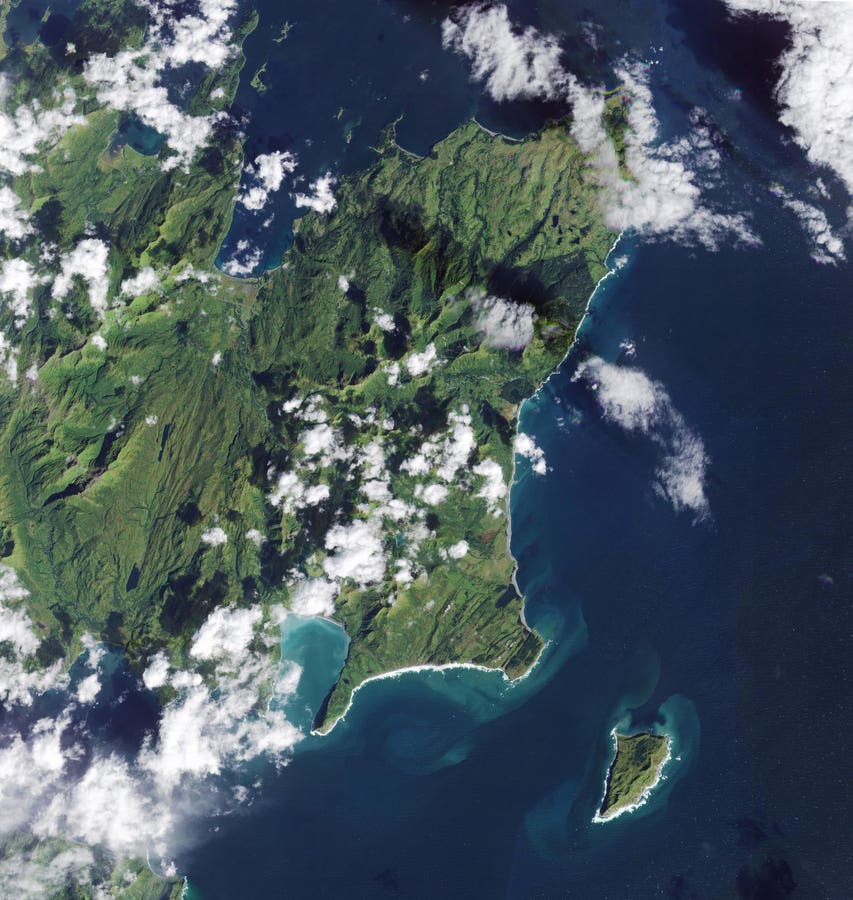The visionary creators of the world-changing imaging satellite colossus Planet Labs – who have vowed to help end war for all time – steal the show in HBO’s sensational new documentary Wild Wild Space, partly with their space-shot photographs of Russia’s lightning attacks on Ukraine.
Planet has rapidly released its high-resolution images of Moscow’s missile barrages on Ukrainian medical centers, cathedrals and campuses to the globe’s leading newsrooms in a campaign to halt these assaults, Planet co-founder Will Marshall told me across a sweeping interview.
Mapping Russian war crimes across Ukraine
The outfit’s moves to freeze the conflict by exposing Russia’s potential war crimes, which include documenting the sites of mass graves dug by occupying Kremlin troops, account for just part of Wild Wild Space’s cascade of accolades for Planet’s co-creators.
The show, now being streamed by HBO Max, skips across a montage of independent space players – from superstar SpaceX to its would-be clone Rocket Lab – that are collectively sparking a NewSpace revolution, and siphoning off space power from government agencies in the process.
Yet Planet’s leaders grab the spotlight with their quest to make war impossible – by capturing every stealth battle move with satellite imagery and bringing these photographic chronicles to a global audience.
The outfit’s top missions, Marshall tells me, are to wipe out armed conflicts and hunger worldwide while helping the United Nations reach all of its Sustainable Development Goals across the 2020s.
Many of these lofty aims are sketched out in Wild Space, including Planet’s would-be role as a peacemaker via its wartime imagery.
Planet stars in Wild Wild Space
“This is now the first war that everyone gets to see what’s happening in real time,” Marshall explains in the riveting film.
Planet Labs began releasing its astounding photographs even before Vladimir Putin’s tanks and troops stormed Ukraine’s borders, and its blow-by-blow coverage has ricocheted across iPhones, tv screens and magazine covers across the continents.
“Putin said: ‘We don’t bomb civilian targets.’ We showed the next day, on the front page of The New York Times, the five hospitals and schools that they’ve bombed,” Marshall says.
“When Russia invaded Ukraine, it was an all hands on deck for our company and its technology,” Planet co-founder Robbie Schingler tells the camera crew. Its super-constellation of sentinel Dove satellites “has been essential in tracking Russia’s ongoing war in Ukraine.”
“You had Russia telling us they were not going to invade Ukraine,” he adds. “In our imagery, you could see the troop build-up.”
Wild Wild Space is based on the captivating book, WHEN THE HEAVENS WENT ON SALE: The Misfits and Geniuses Racing to Put Space Within Reach, penned by journalist Ashlee Vance, who also helps narrate the documentary.
“WHEN THE HEAVENS WENT ON SALE”
In a review of the book, The New York Times likewise zooms in on Planet Labs and its wunderkind founders, recounting their quest to create a new generation of miniaturized satellites, with cameras, transmitters and solar arrays on compact fliers that circle the Earth at 28,000 kilometers per hour, all while capturing images of the spinning planet.
Planet produced a “network of tiny, solar-powered satellites that blanket the Earth with cameras, able to capture images of any point on Earth at any time,” the Times reported.
“It’s an extraordinary achievement, and Vance nicely illustrates how those images ‘have already seeped into our lives (as the source, for instance, of many satellite photos we see of the Ukraine war).’”
The book, and the film, also trace Marshall’s earlier stint at the NASA Ames Research Center in Silicon Valley, and the strange chain of events that led to his being catapulted into that post.
Will Marshall and Robbie Schingler met while writing a torrent of academic papers that warned against deploying weapons in low Earth orbit, and then co-authoring space-peace manifestos while presenting them at conferences around the world.
At one gathering, where a U.S. general was giving a talk on a proposal to station armed interceptors in low Earth orbit to shoot down enemy-launched missiles, Marshall and Schingler picketed outside the venue to protest the envisioned weaponization of space.
“Peace in space – no space weapons”
“We stood outside and handed out these little flyers: Peace in space, no space weapons,” recalled Marshall.
By an incredible twist of fate, that evening they bumped into the speaker, General Pete Worden, the one-time tech lead for the Strategic Defense Initiative – a space-based missile defense shield. The general and the peace activists staged an impromptu but friendly debate on the missile defense plans – all inside the unlikely venue of a Houston nightclub.
That chance meeting would ultimately change all their lives.
When Washington despatched Worden, an acclaimed astrophysicist, to head up NASA Ames, he invited the future founders of Planet, along with a constellation of other young space scientists with a rebellious streak, to join what would become a futuristic skunkworks of radical spaceflight experiments – rejecting NASA’s rigid traditionalism in favor of Silicon Valley’s mantra of “Move fast and break things.”
“When I came to Ames,” Worden recalled, “I brought a hat-trick of young people with me.”
“These are like the best of the best PhDs in all different areas of physics, computer science,” recounts a narrator. “It really started a revolution – or I might call it a counterrevolution.”
Nearby, Elon Musk and SpaceX, tapping the energy and zeitgeist of Silicon Valley, were racing to loft their first rocket, even as the new iconoclasts were transforming NASA Ames, and the two sides clicked.
Around the same time, Apple’s launch of the avant-garde iPhone, which combined a leading-edge camera, transmitter and Web interface – the same components required for a simple Earth-observation satellite – triggered an epiphany for Marshall.
The metamorphosis of a smartphone into a satellite
He raced through experiments aimed at transforming an advanced smartphone into the world’s first micro-scale imaging sat.
Commander Worden, while shielding his Ames acolytes from volleys of criticism being fired off from NASA headquarters in Washington, even gushed to Barack Obama, during a presidential tour of the freewheeling research outpost, that his group had sent the cheapest-ever spacecraft into orbit on a mission to image the planet.
While Marshall’s first round of prototype CubeSat cameras were shot into space by NASA, they would ultimately give rise to the more sophisticated satellites designed and launched by the newborn Planet Labs.
His inner, utopian compass might have been set by his pole-star professor at Oxford University – theoretical physicist Roger Penrose – who would later be awarded the Nobel Prize in Physics for his world-leading discoveries surrounding black holes and other cosmic phenomena predicted by Albert Einstein’s General Theory of Relativity, including the unfolding of the early universe following the Big Bang.
Marshall’s ongoing drive to end the military conflict in Ukraine, and to halt the testing worldwide of anti-satellite missiles, in some ways resembles Einstein’s earlier campaign to abolish nuclear super-bombs.
Yet Planet Labs’ play-by-play revelations of Moscow’s every battle move across Ukraine, along with SpaceX’s airlifting of thousands of Starlink satellite terminals into the besieged democracy, have infuriated the Kremlin.
Russian fighter-bombers target SpaceX terminals
Over the last two years, Putin’s lieutenants have trumpeted their threats to begin shooting down allied satellites aiding Kyiv, even as Russia’s strategic weapons designers develop a new nuclear-armed spacecraft that could stalk Western players across low Earth orbit.
As it pushes forward the first phase of its Space War against Ukraine, the Kremlin has deployed fighter-bombers, missile brigades and swarms of drones to attack Starlink terminals along the borderlands, and last week launched its new Oreshnik nuclear-capable missile to attack the Rocket City of Dnipro.
Yet Will Marshall remains convinced that shining a luminous spotlight from space on war maneuvers planet-wide could ultimately stamp out combat as a means of interaction between fellow members of the UN.
He adds that to speed up that outcome, Planet has been closely collaborating with Human Rights Watch and other leading rights defenders, along with investigative journalists, to map out Russia’s violations of international law that could one day help convict Putin and his two top generals of war crimes at the International Criminal Court.
Vladimir Putin’s war crimes trial
The Court, based in the Netherlands, has already issued an arrest warrant for Putin, and for the two Russian generals who have spearheaded the invasion of Ukraine.
Professor Jack Beard, a former Pentagon counsel who is one of the world’s leading experts on the mosaic of international treaties governing war crimes, told me in an interview that Planet’s powerful imagery will make for super-strong evidence at the Putin trial.
He adds that if Russia’s democratic faction – which still survives across the country’s gulag archipelago and in exile – miraculously managed to gain power, the Kremlin’s new rulers could turn Putin over to the ICC’s international panel of judges.
During a “No Putin. No War” protest that crisscrossed the center of Berlin earlier this month, Russia’s dissidents-in-exile – headed by Yulia Navalnaya, the wife of the slain opposition leader Alexei Navalny – called for Putin to be extradited to The Hague to face the war crimes charges that now hang over his head like a planet-spanning Sword of Damocles.
Read the full article here





